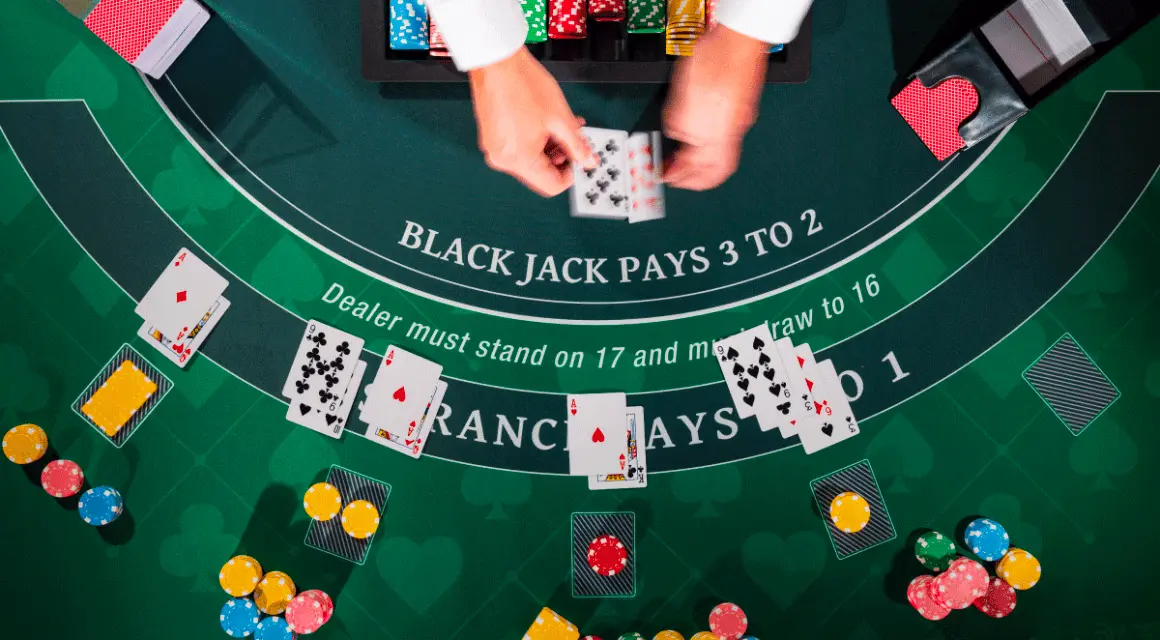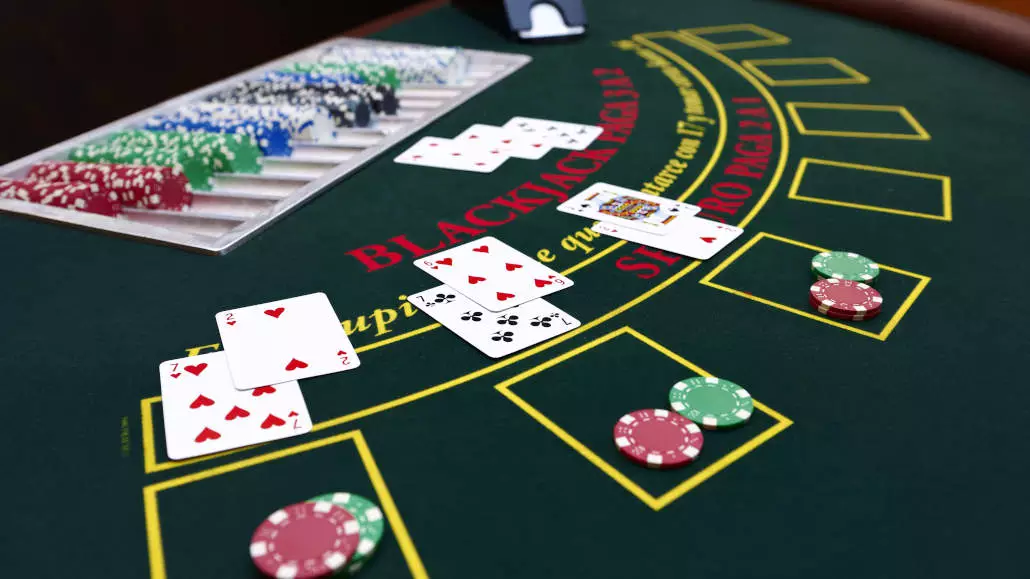
Blackjack Card Counting
The practice of card counting has become infamous as a tried-and-true strategy in the exciting game of blackjack. While it can be highly effective, mastering it requires time and patience in order to flawlessly execute strategic moves. But effectively counting cards boils down to following a few straightforward steps with precision. By doing so, you can consistently accumulate significant winnings. Scroll through this article to discover more about the art of card counting in blackjack and maximizing your wins.
| Techniques | Description |
|---|---|
| Hi-Lo System | Assigns values to cards (+1, 0, -1) and keeps a running count to estimate the composition of the deck. |
| KO System | Similar to Hi-Lo but with an unbalanced count for easier use. |
| Omega II System | A more complex system assigning different values to cards. |
| Wong Halves System | A level 3 system offering increased accuracy in estimating the remaining deck. |
| Hi-Opt Systems | Various systems with additional complexity and accuracy improvements. |
| Back-Counting | Player joins a game only when the card count is favorable. |
| Shuffle Tracking | Tracking specific cards or groups of cards through the shuffle. |
| Team Play | Multiple players working together to maximize the advantage. |
Understanding the Concept of Card Counting
Mastering the art of counting blackjack cards requires a solid grasp of mathematics, coupled with a keen understanding of statistics and probability. This crucial strategy revolves around predicting whether the upcoming dealt hand will favor you, the player, or the dealer. By constantly keeping track of the high- and low-value cards in play, you gain the upper hand in the game and an advantage over the house.
Leveraging the power of counting cards requires a sharp memory, as it provides a near-accurate estimation of the remaining deck composition. This comprehensive knowledge will help you make calculated moves during a game of blackjack. This will greatly enhance your chances of coming out victorious and heighten your enjoyment of the experience.
As the cards are dealt, you can continuously adjust your running total by adding or subtracting the designated number. The running count won’t be affected if the value of the cards is 0. Therefore, lower-valued cards will raise the number of high cards remaining and raise the count.
Meanwhile, higher-valued cards will lower the count by increasing the number of low cards. Through diligent practice, you can master the strategy of card counting and know when to bet big or small, increasing your chances of winning big and minimizing losses.
Refer to this table to get a better understanding of how does card counting work in blackjack according to the value of a card:
| Card Value | Count |
|---|---|
| 2, 3, 4, 5, 6 | Count +1 |
| 7. 8, 9 | Count 0 |
| 10, J, Q, K, A | Count -1 |
Does the Card Counting Strategy Work in Online Blackjack?
In the world of online blackjack, traditional elements like a shoe and dealer are absent. Instead, a random generator is utilized to produce cards for each round. This means that between rounds, the cards are essentially reshuffled due to the presence of the RNG.
Without a specific shuffle sequence or cut card at a designated point in the 6-8 decks, card counting from the previous round must be discarded and restarted for the next round. Therefore, it is impossible to maintain a running total of more than one card, rendering counting cards in blackjack ineffective in the realm of online casinos.
Basic Card Counting Strategy for Beginners
Any beginner wondering how to count cards in blackjack must familiarize themselves with the Hi-Lo system. This technique involves giving a score of 0, -1, or 1 to every card in the deck. The values of 2 to 6 receive a +1, 7 to 9 are scored as 0, and 10 through Ace carry a -1.
As players tally up the scores after each round, they receive a clear indication of whether to place high or low bets based on the current count. This method of counting cards blackjack becomes increasingly precise as the game progresses and players gather more information.
Card Counting Strategies for Advanced Players

If you become an advanced player with a comprehensive understanding of what is card counting in blackjack, you can focus on using more complicated strategies. The top strategies that you can leverage for counting blackjack cards include:
Omega II System
While counting cards may seem like a simple task, the Omega II sets itself apart as a multilevel counting system. This is due to its intricate method of assigning values to certain cards, with some being worth 1 or -1 while others hold a value of 2 or -2. But the sum of all card values ultimately equals 0 in this blackjack counting system.
The complexity of the Omega II system may initially bewilder players unfamiliar with its structure and card values. However, once memorized, the system becomes much more manageable, as the underlying math is straightforward and understandable. Moreover, the Omega II boasts significantly greater accuracy compared to basic, level-1 systems like the Hi-Lo.
This blackjack counting method works in the following ways for different values:
| Card Value | Count |
|---|---|
| 2, 3, 7 | +1 |
| 4. 5, 6 | +2 |
| 9 | -1 |
| 10, J, Q, K | -2 |
| 8, A | 0 |
Separate Count for the Aces
Most multilevel blackjack counting systems have a designated count for Aces, and the Advanced Omega II adheres to this rule. While the Aces are neutral in the main count and not included at all, they hold great significance in the deck. This is because they can form the most powerful hand in the game, blackjack, consisting of an Ace and a 10-value card.
By implementing a secondary count system solely for Aces, players have the ability to strategically monitor their chances of receiving a blackjack in the first hand. It’s a straightforward process where players simply tally the Aces as they are dealt on the table. Next, players subtract that value from the total number of Aces in the blackjack game.
This means that a single deck and a two-deck game comes with 4 and 8 Aces. Similarly, a four-deck game has 12 Aces. The 6 and 8-deck blackjack games would contain 24 and 32 Aces, respectively.
Wong Halves System
The Wong Halves system is renowned for its formidable difficulty and intricate point value scheme. Yet, those who master its principles and expertly apply them will undoubtedly gain a significant advantage over the casino.
One of the things that sets the Wong Halves system apart from other card counting methods is its use of fraction-based point values for certain cards. This brings an additional layer of difficulty to the process of counting blackjack cards.
In order to use the Wong Halves system effectively, players must also convert the running count into a true count. This adds yet another task to the already challenging process of keeping track of the cards being dealt. Understandably, many seasoned players are hesitant to use this method due to the intense multitasking required. However, when applied correctly, it provides players with incredibly accurate information and greatly increases their chances of winning.
This system of counting cards offers tremendous benefits for players, with a betting correlation of an impressive 0.99 out of 1.00. This clearly demonstrates the effectiveness and accuracy of Wong Halves in predicting the favorability of upcoming cards. When used correctly, this system greatly enhances a player’s chances of gaining an advantage over the casino.
Allocating Card Values with the Wong Halves System
The complexity of Wong Halves sets it apart from other card counting systems. Unlike other systems, Wong Halves utilizes an intricate strategy that involves assigning fractional values to certain cards. This level of calculation can be challenging for many players, especially in the bustling environment of a casino where distractions abound and focus is essential.
The Wong Halves system follows this elaborate plan:
| Card Value | Count |
|---|---|
| 5 | Count +1.5 |
| 3, 4, 6 | Count +1 |
| 2, 7 | Count +0.5 |
| 8 | Count 0 |
| 9 | Count -0.5 |
| 10, J, Q, K, A | Count -1 |
How Are Advanced Card Counting Strategies Different from the Hi-Lo Strategy?
The Hi-Lo system utilizes a level-1 count, in which the running count always changes by just one. To achieve greater precision, a multilevel count assigns varying values to different cards. In more advanced counts, values such as +2, -2, +0.5, and -0.5 are included.
Exceptional players may even maintain a separate count for specific cards, like aces, to account for discrepancies between betting and playing strategies. The counting systems work in the following ways for different card values:
| Card Strategy | 2 | 3 | 4 | 5 | 6 | 7 | 8 | 9 | 10, J, Q, K | A | Level of Count |
|---|---|---|---|---|---|---|---|---|---|---|---|
| Hi-Lo | +1 | +1 | +1 | +1 | +1 | 0 | 0 | 0 | -1 | -1 | 1 |
| Omega II | +1 | +1 | +2 | +2 | +2 | +1 | 0 | -2 | -2 | 0 | 2 |
| Wong Halves | +0.5 | +1 | +1 | +1.5 | +1 | +0.5 | -0.5 | -1 | -1 | -1 | 3 |
Any beginner wondering how to count cards in blackjack should choose the Hi-Lo strategy. They can move on to the more complicated Omega II and Wong Halves systems only after becoming efficient at this basic strategy.
Conclusion
After learning what is card counting, it’s imperative for you to understand whether the practice is legally acceptable. It must be noted that card counting isn’t illegal as long as you aren’t using any machine to do it. So, you can master the art of blackjack card counting to significantly enhance your wins.
However, remember to begin with the hi-low strategy and develop a comprehensive understanding of it before moving on to the more complicated ones. Gradually, you can start incorporating the Omega II and Wong Halves method for card counting blackjack.
Some great sources for further reading:






